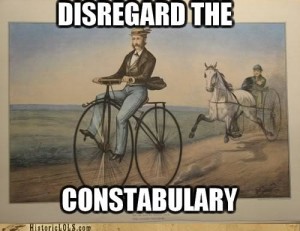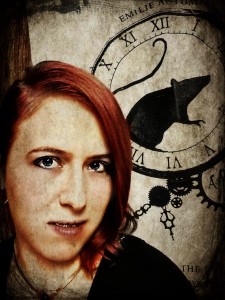Every so often, I hear a writer claim that everyone must “Always end your (book/chapter/scene/page/sentence/introductory clause) on a cliffhanger.” Yes, maintaining your reader’s momentum through the story is essential. Yes, cliffhangers can be an effective means of doing just that. Extremely so. By their very nature, cliffhangers leverage the reader’s investment in character or story to push the narrative forward and create a sense of urgency. However, they also run the risk of backfiring and driving readers away if used improperly or cheaply.
This sort of manipulation typically takes one of three forms. In the first instance, a beloved character is threatened, but neither their fate nor their response to the danger is revealed. It is a sort of dramatic pause, like cutting to a commercial break in your book. The emotional draw in this instance is dread; the reader wants to know that the character will survive the encounter. They keep reading to find this answer.
Another option is to have a powder keg moment. In this structure, the reader has been anticipating a specific event, usually some sort of violent conflict. It is akin to watching the fuse burn towards a keg of gun powder. The reader knows that the explosion is coming. They have been waiting for it, bracing for it. However, in the moment before the explosion of action, there is a prolonged stillness and the scene is cut. In this case, the draw is anticipation. The reader needs to see how the events play out and if those events match how they thought the scene would progress.
The third major case is what I sometimes call “the First Boot Drops.” A major story event occurs, often unexpected, but before the characters or reader have time to fully react, the story cuts. Though the threat to the character is implicit, the reader’s tension comes from not knowing what will happen next. They are drawn forward by their need to witness those consequences. They are waiting for the other boot to fall.
In all three cases, cliffhangers play upon the reader’s need to know the resolution to a threat against a beloved character. The situation must represent a believable and immediate threat whose consequences would be severely and personally damaging to the PoV. For that to happen, the reader must be deeply enough invested in the character to feel a sense of urgency. Used too early in the story, before a strong bond is developed between reader and PoV, the technique will feel like a cheap ploy.
The threat’s believability hinges on the reader’s trust of the author’s skill. I see cliffhangers as an addendum to the writer’s contract with the reader. They accept the situation because they believe that the writer will pay off on the promise with a satisfying resolution. Revealing that the character was never actually threatened after all is cheating. You might get away with pulling that sort of bait and switch once, but over use of cliffhangers will numb your reader to threats against the character. Once they come to believe that any threat against the character is an instance of “crying wolf,” it’s game over for your book.
As for immediacy, it is perfectly legitimate to cut to another PoV in order to draw out the suspense. However, the contents of that second PoV must be interesting enough to keep the audience moving forwards until you cut back to the character you left hanging. Furthermore, the threatened character needs to resolve their situation to pay off on the tension. Lag for too long, and the effect is lost.
Cliffhangers are an effective tool, not a one size fits all solution for every situation. They require authorial trust and reader commitment to be effective, as well as an impeccable sense of timing. Used too often, they begin to feel cheap and lose their effectiveness. However, betraying your promise to the reader is even worse. False anticipation will drive readers away faster than any other authorial sin.










